
views
Recognizing Leaves, Buds, and Branches

Check for the tree’s distinctive twig-style leaves. The walnut tree’s leaves are its most distinctive feature during the growing season. They grow in a green twig that’s about 1–2 ft (0.30–0.61 m) long and sprouts from the branches. Each one of these twigs can have 15-24 leaves sprouting along each side. The twigs are concentrated at the end of the branches, so you’ll see pinnately compound green leaves around there. The leaves have an irregular oval crown (meaning they're oval-shaped with a thin tip at the end). They're usually light green in the spring and summer, and turn bright yellow in the fall. The walnut tree should have leaves from April until about November, depending on the temperature. You can spot the trees more easily during these months.
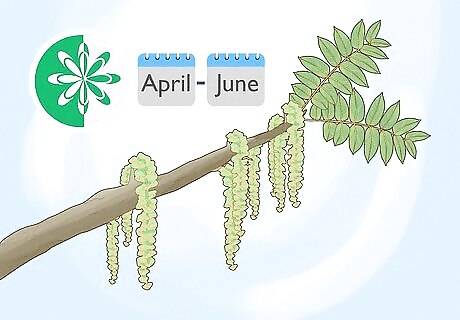
Spot drooping, green or gold flowerings from the branches in the spring. Between April and June, walnut trees produce flowers that grow along the branches and behind the leaf buds. They usually grow upwards, but they’re soft, so they droop over the branch and point down when they’re long enough. Look for these flowers during the spring months to identify walnut trees. When the flowers are still growing, they look like tiny cactuses coming out of the branch. These flowers don’t produce a bud like the flowers you might be thinking of. If you don’t know what they are, you might think they were a different type of leaf.
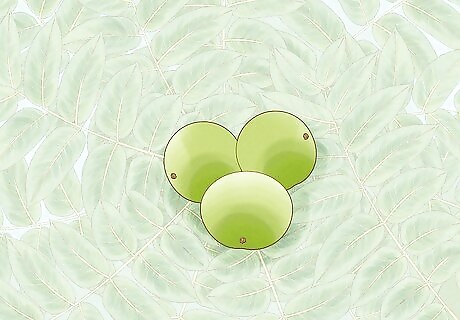
Find round, green fruit bunches growing during the blooming season. These green globose fruits contain the walnuts, but they don’t look like any walnuts you’ve seen before. The husk around the nut is green at first, then gradually turns brown as it ripens in the late summer. When the fruit is full-sized, it resembles a lime. They grow in bunches of 3 or 4 at the end of each branch near the leaves. Mature trees start growing fruit as soon as spring starts, so you should be able to spot fruits from the spring to autumn. In the spring, the fruit will only be small green buds at the end of the branches, so it might be tougher to spot. Trees usually don’t start producing fruit until they’re 10 years old. Learn to rely on other identification methods like the leaves and flowers to find immature trees.

Look for short terminal buds on the end of each twig during the winter. In the winter, you can't rely on leaves and fruits to identify the tree. However, there are some smaller growths that you can use to spot the tree. The terminal bud is where the fruits grow from. This is a rounded tip on the end of each branch. It’s usually gray in color and slightly fuzzy. The buds may be tough to see if the tree is very tall. A pair of binoculars will make this easier.
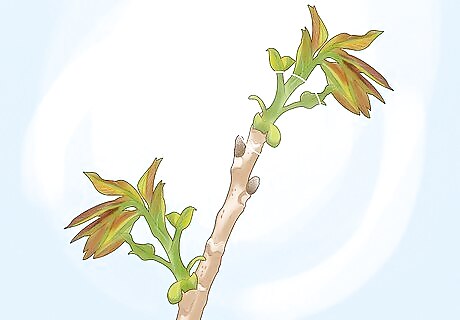
Check for small leaf buds alongside the twigs if the tree isn't blooming. Look alongside the twigs for small, rounded protrusions. These are the bud that the leaves sprout from. They’re also gray in color, in contrast to the brown or green twig. This is another helpful identification tip in the winter. The twigs may have slight notches where the buds sit. These are scars from the previous year’s leaves.
Checking the Tree's Physical Characteristics
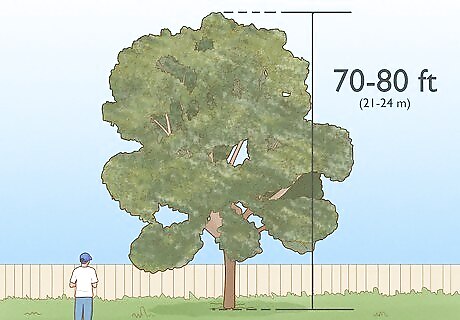
Look for a tall tree 70–80 ft (21–24 m) in height. Walnut trees are tall and are often some of the tallest trees in the area. Their average height is 70–80 ft (21–24 m), but they can even reach up to 150 ft (46 m) on rarer occasions. If you don’t know where to start, look for the tallest trees in the area. On average, grown walnut trees are 2–4 ft (0.61–1.22 m) in diameter. This isn’t the most reliable method since trees could still be growing, but the height is probably the first thing you’ll notice. Full-grown walnut trees are usually the tallest in the area, so looking for a tall tree can give you a good starting point.
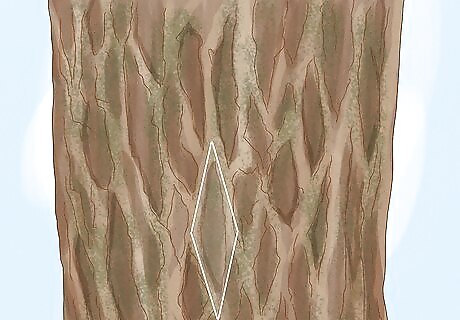
Inspect the tree bark for a deep, diamond pattern. If it’s wintertime and you can’t use leaves or fruit to identify a walnut tree, the tree's bark is a distinguishing characteristic. The bark has deep ridges that, from a distance, resemble a diamond pattern. This is a good early sign that you’re looking at a walnut tree. The tree may range from light brown, green, or dark grey furrowed bark. On average, it's a darker brown color.
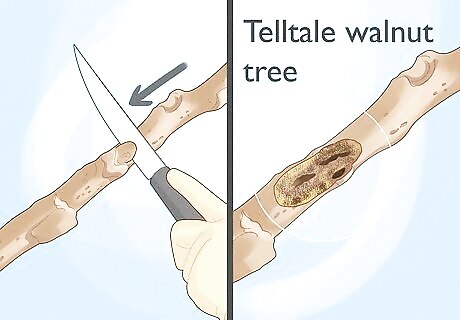
Cut a twig longways to check for a spongy interior. Walnut tree twigs aren’t solid all the way through. They have a spongy interior that looks slightly like honeycomb sections. Try picking a twig off and cutting it longways. If you see horizontal ovals along the length of the interior, this is a telltale walnut tree sign. Be careful when using a knife. Wear gloves to avoid cutting yourself, and don’t hold the twig while you’re cutting it. Try to pick up a twig that fell off instead of cutting one off the tree. This could damage it.



















Comments
0 comment